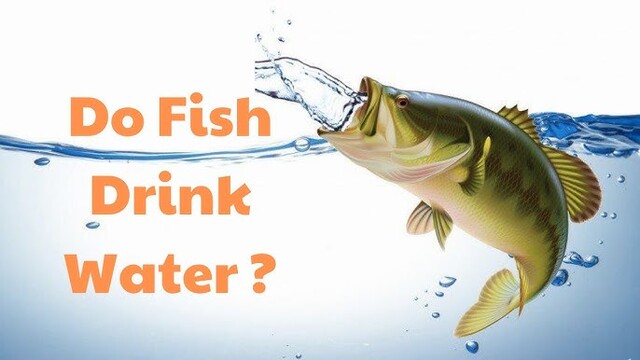When you think of fish, one of the most common questions that might come to mind is: Do fish drink water? It’s an intriguing question, especially considering that fish live in water. While it may seem odd, the answer isn't as simple as yes or no. To understand how fish interact with water, it’s essential to delve into the physiological processes of fish and their environment.

Fish, like all living organisms, need to regulate their internal balance of fluids, which includes water. This process is part of a system called osmoregulation, which helps fish maintain the proper balance of water and salts within their bodies. Osmoregulation is crucial because water is constantly moving in and out of a fish’s body, and this movement depends on the type of environment they live in.
The answer to whether fish drink water depends largely on whether the fish is a freshwater or saltwater species. The concentration of salt in the water plays a significant role in determining how fish interact with their environment.
Freshwater fish, such as goldfish or bass, live in water with a much lower concentration of salt compared to the concentration inside their bodies. This creates an environment where water tends to flow into their bodies through osmosis. To avoid water intake becoming excessive, freshwater fish actively excrete large amounts of diluted urine. They do not need to drink water like humans do, as they naturally absorb enough water through their skin and gills to maintain hydration.
Saltwater fish, on the other hand, face a different challenge. The ocean has a much higher salt concentration than their body fluids. As a result, saltwater fish constantly lose water to the surrounding environment through osmosis. To compensate for this, saltwater fish need to actively drink seawater. However, drinking seawater introduces high levels of salt into their bodies. To prevent dehydration and maintain proper salt balance, saltwater fish have specialized kidneys and gills that excrete excess salt.
Fish do not drink water in the same way humans or land animals do. They don't sip from the surface of the water; instead, fish absorb and expel water through their gills and mouth. For example, saltwater fish intentionally swallow seawater, and specialized cells in their gills help expel excess salt. Freshwater fish, however, rely more on the natural flow of water through their gills to keep their bodies hydrated.
Osmoregulation is the key to understanding how fish drink water. This process ensures that fish can survive in different environments by adjusting their internal systems to maintain water and salt balance. The efficiency of osmoregulation depends on the fish species and the salinity of their environment. Freshwater fish constantly work to prevent too much water from entering, while saltwater fish need to regulate salt levels as they drink seawater.
Water is essential for all living organisms, and fish are no exception. Fish need water to perform a variety of biological functions, including:
Maintaining cellular functions: Water is a vital component in the cells of a fish’s body, allowing them to perform essential metabolic processes.
Excreting waste: Fish need water to help remove waste products from their body through urine.
Breathing: Fish extract oxygen from water as it flows over their gills. Without adequate water, fish cannot breathe and would suffocate.
Thus, drinking or absorbing water is necessary for fish to sustain themselves and thrive in their aquatic environments.
Fish have evolved unique strategies to adapt to their surroundings. These adaptations help them regulate water intake and salt levels in their bodies, ensuring survival in diverse aquatic environments. Some fish species are even capable of surviving in both freshwater and saltwater, switching between osmotic processes depending on where they are.
One example is the euryhaline fish, which can tolerate a wide range of salinities. They can move between freshwater and brackish or saltwater environments, adjusting their osmoregulatory processes accordingly. Species like salmon and certain types of gobies are known to exhibit this remarkable adaptability.
So, do fish drink water? The answer depends on the type of fish and its environment. Freshwater fish absorb water passively through osmosis, while saltwater fish actively drink seawater and expel excess salt. Both types of fish rely on osmoregulation, a vital physiological process that ensures they maintain the right balance of water and salts in their bodies.
Understanding how fish drink water sheds light on the complexity of life in aquatic environments and the remarkable adaptations fish have developed over millions of years. Whether they’re swimming in a freshwater lake or the salty depths of the ocean, fish have evolved specialized systems to ensure their survival and well-being.
References:
Richards, R. (2018). Fish Physiology and Biochemistry: Water and Salt Regulation. Springer.
Hwang, P. P., & Lee, T. H. (2017). "Osmoregulation in Fish." Comprehensive Physiology.
animal tags: fish
We created this article in conjunction with AI technology, then made sure it was fact-checked and edited by a Animals Top editor.